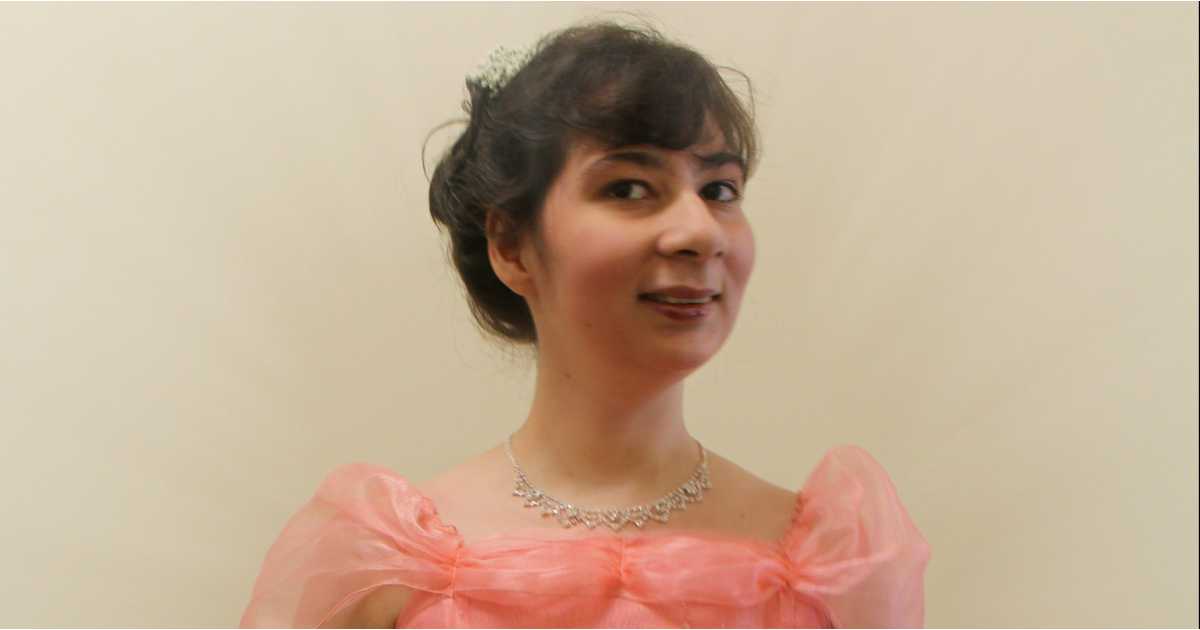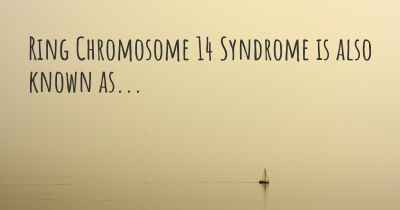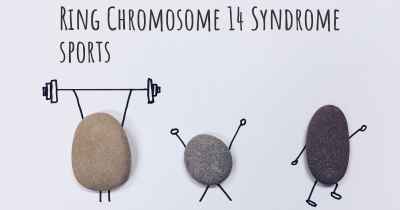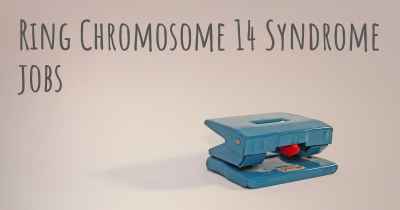
Living With Ring14 - Brooke's Story
Error
0-1years (1992-1993)
On January 21, 1992, Brooke Anne Costilla joined us in this world. She was born 6 weeks premature, weighing 5lbs. 6oz. Other than a couple of days in the oxygen tent and 3 days under a biliruben light, she seemed like a normal baby. She was progressing well, the only thing I noticed was that she was always crying like she was in pain, not colic, but different. I tried to get the doctors to listen to me that my instincts told me that it was not colic, but, as I have found through the years, they just didn’t listen. The day Brooke turned 3 months old, was the day she started having seizures. It was very subtle at first. She was in her swing and when passing by the mirror, seemed to be startled. I took the mirror down but the startled effect didn’t end. I called her pediatrician and told him what I was observing. He did have an EEG run, but it showed nothing so he advised me it was OK to go out of town. We went to Oklahoma to visit her grandmother and Brooke’s convulsions (as that was what I thought they were back then), were worsening. Because Brooke had an aunt that was handicapped due to a high fever causing severe seizures, her grandmother knew immediately what it was. We rushed her to the ER, no one could figure out what was going on and couldn’t stop the seizures, so she was mediflighted back to Amarillo, TX. That was the beginning of any parent’s worst nightmare.
For three months, Brooke had seizures after seizure with no luck in controlling them. As we did not have a pediatric neurologist in Amarillo at that time, the neurologist she was seeing started conferring with Children’s Hospital in Houston Texas. An MRI was done when Brooke was 3 months old showing her brain growth to be in the 50 percentile. At the age of 6 months, and still no luck in controlling seizures, Brooke was mediflighted to Children’s Hospital in Houston. After a few days and tons of tests, it was determined that Brooke suffered from Ring 14. Finally an answer, but not really as it was a very rare disorder and no one seemed to know anything about it. No one could tell me what to expect, and I even initially thought my child was going to die as it was not explained to me that her brain growth going from 50 percentile to 3 percentile didn’t mean that she was going to die.
After finding out Brooke was going to live, I wanted to know more about the disorder; however, to my surprise no one really knew what kind of things I was to expect. The only thing they could tell me is that Brooke would have seizures and developmental delay and would need lots of therapy. So, with that information in hand, I returned to Amarillo Texas and found a therapist to begin our very long journey.
When Brooke turned 10 months old, we moved to Oklahoma and found ourselves re-educating doctors on what very little we knew about Ring14. Even the geneticist had to look it up and could only tell me that he didn’t know how far she would progress and to not let anyone else tell me either. He says this is because Ring14 has a very wide range of abilities and disabilities. So this means that I am still in the dark. In the meantime, Brooke is still spending 2 weeks of every month in the hospital with severe seizure activity. Brooke’s progress was very slow and every time she would have a round of seizures, she would forget what she just learned and it would have to be re-taught again.
2-5 years (1994-1998)
While the seizures are still very bad, I have now learned to take care of most of them at home, drastically reducing the amount of ER visits and hospitalizations. I did a trial of the ketogenic diet with absolutely no success, in fact the seizures worsened. She has now learned to walk, although she is very unsteady as her feet turn inward and she has a forward leaning gate. We have put her in orthotics to try to help her balance and walking, but it doesn’t really seem to be doing much. She has started special-ed pre-school and is receiving PT, ST and OT. Development is still very slow at this point and she is not growing much. She also seems to feel no pain when she gets hurt. I believe this to be the Phenobarbital.
Because Brooke seemed to have endless sinus infections, I took her to an ENT, it was found that her nasal passage wasn’t wide enough, so she had her first surgery, right meatus antrostomy, to open up the narrowed nasal passage. Since this, she very rarely has any sinus infections.
6-10 years (1999-2002)
The seizures have been steady and have seen no improvement, then, suddenly, when Brooke turned 8 years old, she only had one seizure the entire year and her progress soared. She learned to talk better and even put a few short sentences together. We had finally mastered using silverware to eat and using a napkin to wipe our face. It was amazing! Then just as suddenly as the seizures had ended, they began again. I believe this was due to her reaching puberty. Once again, we were dealing with multiple seizures for at least 4 days of the week. This has caused her development to slow again, but she does seem to retaining more of the abilities than before. She is still in school; however, she spends a lot of time asleep as the seizures have become very relentless.
Brooke’s walking is still a bit unbalanced and she has developed knots on the outsides of both her feet. I thought they were bone spurs as it would rub holes in her shoes. To my surprise, her bones on the sides of her feet were not growing with the rest of her body. We had to have our second surgery, a right and left percutaneous heel chord lengthings as well as a calcaneal lengthening and osteotomy. She had to be in double walking casts for 6 weeks. She spent more time in a wheelchair as walking far distances was impossible. After the casts were taken off, she was fitted for more orthotics. She is no longer complaining of her feet hurting and we continue stretching exercises to make sure the heel chords don’t tighten up again.
Brooke’s behavior remains the same. I describe it as if flipping a light switch. This is how quickly she can go from being happy to mad. When she does get angry, she usually throws whatever is in her hands, of course this behavior is not acceptable and I take away whatever she is throwing, but little else can be done about the behavior except to try to distract her thoughts. Most times this works, but sometimes it doesn’t. Funny, she seems to laugh and forget about being mad if I say things like “ow, you hurt me!”. She has a stuffed monkey named Bongo. He tends to get the brunt of her aggressions, she is learning that she may punch him, throw him down and stomp on him but no other toys.
She doesn’t really have any other medical issues at this time, except that she is chronically constipated. This has been pretty constant since she was born. I had been taking her to a GI doc who constantly asked if I was giving the medication correctly! I was very upset by this as I have been giving Brooke medications since she was 3 months old and KNOW how to give meds. I finally went to another pediatrician who was absolutely wonderful. He figured out that Brooke actually had an anterially displaced anus. This meant that the anus had an upward curvature that prevented her from being able to eliminate properly. But unfortunately by the time I found this pediatrician, it was too late. Brooke had already developed many problems due to the severity of the constipation. She was unable to empty her bladder on her own either. Because of the constipation putting pressure on the bladder, it prevented her from being able to urinate until her bladder was so full that it would just spill over. This caused the bladder wall to stretch out and become very floppy. Also the constipation caused her bowels to stretch as well. Because this issue was not resolved soon enough the third surgery, an anoplasty, was unsuccessful. I have to straight catherize Brooke 4 times a day and she is on a daily dose of mirilax. Even with this, Brooke still has wetting accidents and also still has chronic constipation, going sometimes a whole week with no bowel movement. She is still having chronic urinary tract infections as a result of the constipation. We treat them as they come on, but the good news is that there doesn’t seem to be any reflux into the kidneys.
11-15years (2003-2007)
Brooke’s seizures are still very prominent, but have had a bit of improvement; however, nowhere where they need to be. She is still on multiple seizure medications and after much stress, anxiety and thought, we decided to try the VNS (vagus nerve stimulator). This was implanted in 2004 and we didn’t see any improvement at first. But slowly we started seeing a decrease in seizures even more in 2007. What I noticed more at first was that Brooke’s behavior seemed to improve a bit, but is still not good at all. The magnet used for the VNS never seemed to help Brooke during the seizure and since her seizure come “out of the blue” with no forewarning, we couldn’t use to magnet to prevent seizures from coming on. She is still on high doses of multiple seizure medications as well. Brooke continues to complain of headaches on a daily basis. She still has a very short attention span, getting bored very easily. She still displays an autism spectrum disorder.
During this time I have decided to remove Brooke from the public school system as I felt she was no longer gaining anything from it. It was to the point that she didn’t want to go anymore. I feel like this was the best thing to do and took her to work with me for several years. While this was very hard I started seeing an improvement in Brooke’s speech and a bit in her behavior as well. The people at work talked to her normally and paid a lot of attention to her, which, I think, was a great contributing factor in her improvement.
Her constipation and urinary problems are unchanged.
16-20 years (2008-2012)
There has been a lot going on in Brooke’s life for the last 5 years. Her seizures have improved greatly. We found that the VNS is playing a very vital role in this. As soon as the batter went low on her VNS, the seizures returned and when it was replaced in 2008, the seizures drastically reduced again. Because the setting for the VNS are so high, the battery only last 3-4 years; therefore, it was re-placed again in 2011.
During this time I have also gotten Brooke approved for in-home skilled nursing for when I am at work. She has excelled in this environment. Her verbal skills and development have soared. She is generally happy, but still has almost daily “light switch” mood swings. She is blessed with a wonderful nurse that understands this and is very patient.
She was diagnosed with severe osteopenia and had a port placed to receive infusions to try to help with this condition. After two port infections, I have opted to stop the infusions as I didn’t see a huge increase in bone density. I will consider options if I start seeing any decrease, but I am hoping that extra calcium and fluids with help with this.
Because Brooke stays dehydrated and she already had two port infections, it was decided to place a g-tube for nutrition and fluid needs. She does eat and drink by herself; however, she has never been able to drink enough to prevent dehydration. And there are days when she refuses to eat and drink at all. This just keeps her stable.
Her gait remains unsteady and her constipation and urinary issues remain the same with the exception of urinary tract infections, because of the extra fluids given via the g-tube, these are very few.
She has really seemed to “calm down”. She no longer runs off and her attention span seems to have improved. She is now acting more mature, more like a teenager, though her mentality is still very low. Mood swings remain the same and I really don’t foresee this changing. I believe a lot of the behaviors to be from sheer frustration.
21-25 years (2013 – present)
Brooke has had a couple of really good scares. We had to re-do the g-tube surgery as it became dislodged from the stomach and lay in between the stomach and outer skin. This has corrected the problem and with a little more education, we have had no further problems with it. It has been a lifesaver as she still stays in a “dehydrated” state. The problem is that the fluids just are not going to her veins as they should and this makes it very hard for blood draws or IV’s.
In February of 2013, her VNS was replaced again, this model seems to be lasting longer and is always helping tremendously with seizure activity.
Then in October of 2013, we rushed Brooke to the ER and found that she had sepsis. She was given a 1 in 3 chance of survival and placed in ICU for one week. It was touch and go for a while since Brooke cannot tell us what is wrong, it was hard to find the cause. After a full body CT scan, a kidney stone was found to be blocking her ureter and there was a big pocket of infection. She was immediately taken to surgery to put a stent in to open the ureter, we could not remove the stone yet as she was too unstable to survive the surgery. Once the stent was put in place and the infection drained, her vitals rebounded. She was placed on the ventilator for 2 days, but it was really more precautionary than anything. After getting out of the hospital she had to go back to the hospital to have her stent removed, the stone taken out and another stent placed. A week later we were back to get the stent removed. Her kidney did not have any damage and we are doing well with that again. We do still flush her bladder twice a day and insert gentamycin every night to prevent bladder infections and the amount and size of bladder stones. This regimen has worked very well for her. And the most amazing thing is that she did not have even one seizure through this whole ordeal.
Brooke’s neurologist that she had for 20 years (and got Brooke of 50 – 100 or more seizures a day, to nothing for 3 ½ years) retired and we were assigned a new one. The new one immediately too her off of her Topamax because of a previous kidney stone, and placed her on Gabapentin. This is a medication we have tried before without success, but I didn’t want to disrespect the physician, so I gave it another try. Within the first month Brooke gained 30lbs and had bad stretch marks all over her body. Then she began having seizures, severe enough to land her in ICU for 3 days. This neurologist refused to remove Brooke from the Gabapentin and put her back on Topamax, even after Brooke’s urologist confirmed that the Topamax was most likely NOT the cause of the kidney stone. So needless to say, that neurologist was fired and I found another one that is absolutely wonderful. No more seizures since placing her back on Topamax.
Also in 2014, Brooke has a partial hysterectomy as she cannot care for herself and this was an unnecessary evil for her. She had already been put on three different birth control medications to help with the symptoms of PMS, but the shots caused severe osteoporosis and the pills would make her cry non-stop. After missing 2 months of menses, she had the procedure done. She did very well, no lasting effects.
Then later in 2014 Brooke started having severe abdominal pain and it was determined that she was having a gallbladder attack. She had to have her gallbladder removed and since the surgeon was in there, I asked him to also remove her appendix as I was pretty paranoid at that time because it is so hard to tell what is really going on. By removing her appendix it was one less worry I would have. She did very well for the procedure and has had no more problems.
As for the bowel and bladder, she has been going on her own a lot more. She still has accidents here and there, but she is doing very well.
Brooke’s mood swings remain the same and her forward leaning gate is unchanged. She still has the same interests and is still a bit calmer. Her sleep patterns have not changed and she is still on sleeping medications, but they even had to be increased. She still complains daily of headaches and we still cannot find a cause or cure. She does seem to like more “grown up” shows now. She absolutely loves COPS! But her mentality seems to remain the same.
We have just recently started going to a church that has a special needs ministry for the young women and she has taken to that very well. She is excited to go and I am hoping that this will help with her social skills.
This is Brooke’s story! I know it is long, but I do hope that it of help to some of the new families faced with this challenge. I would like to list all the seizure medications that Brooke has tried in the past and what she is on now. She has tried: Depakote, Phenobarbital, Neurontin, Clonodine, Dilantin, Tegretol, Zonegran, Gabapentin and Lamictal. She is still on Felbatol 900mg bid, Klonopin 1mg bid, Trokendi 200 qd, Keppra 750mg bid and she takes Diastat or Ativan as needed. She is on several other medications for various reasons and we are going to add Onfi to see if it will help with sleep, headaches and mood swings.
Brooke’s diagnosis at this point are as follows: Ring14, Epilepsy, Global developmental delay, Cerebral palsy, Allergies, Chronic dehydration, Chronic constipation, Chronic urinary tract infections, Severe osteopenia, Microcephaly, Insomnia, Large floppy bladder, Anterially displaced anus, Gastroesophageal reflux disease, behavioral problems and Autism spectrum disorder.
She also had a karyotype with array done, but I really don’t understand the results at this time.
Brooke is a very happy “adult child” and she has so much unconditional love to give. She has taught me to have strength I never knew I had and because of that, I have made it through some really tough times, but have become a better person because of her.
If any of you would like to know anything else or even just need someone to talk to that can “truly” understand what you are going through, you are more than welcome to contact me. I am usually pretty quick to answer, but I do work about 40-50 hours per week so, depending on Brooke and her health, it might take me a few days.
You may reach me via e-mail or facebook: Living With Ring14 or [email protected]

0 comments







